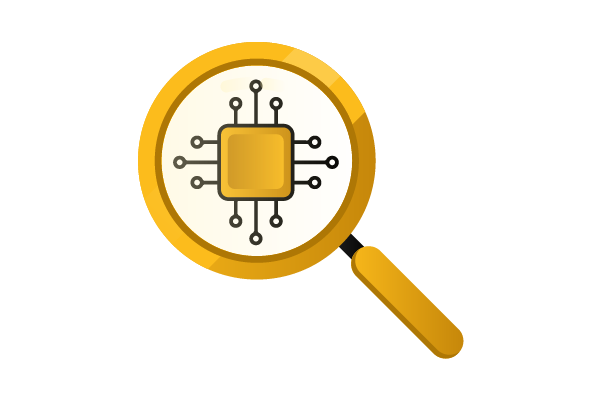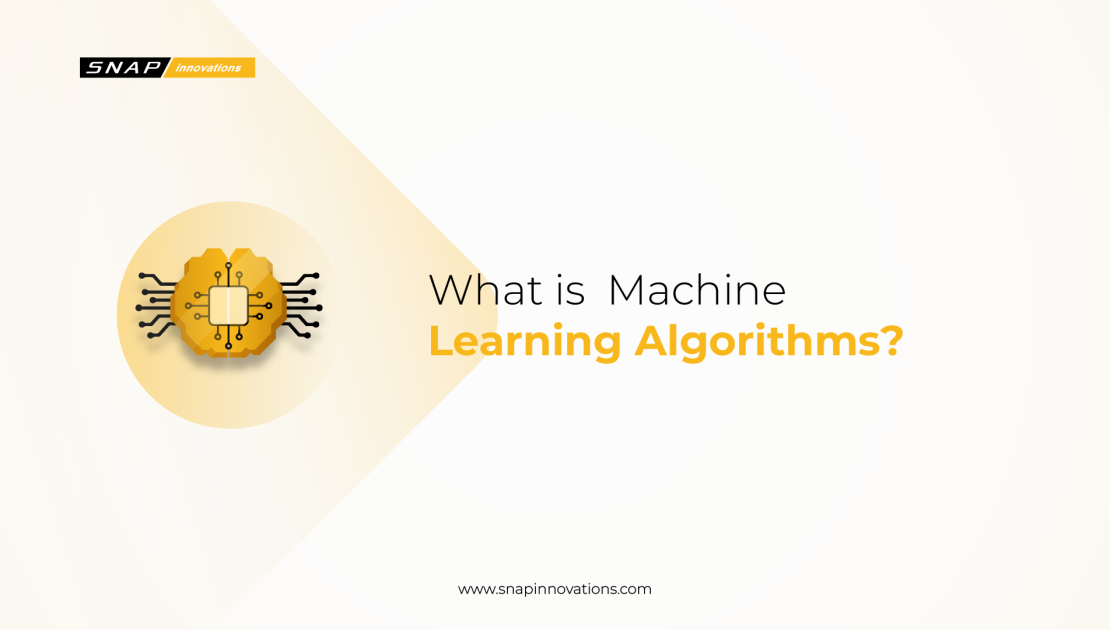Machine learning is a branch of artificial intelligence (AI) that deals with the design and development of algorithms that can learn from data. Machine learning algorithms are used in a wide variety of applications, including spam filtering, fraud detection, and medical diagnosis.
The versatility and efficiency of machine learning algorithms have revolutionized how data is analyzed and interpreted across industries. Beyond spam filtering and fraud detection, they are integral in advancing fields like autonomous vehicles, where they process and interpret vast amounts of sensory data to make real-time decisions. In finance, they are used for algorithmic trading, credit scoring, and risk management. In healthcare, machine learning not only aids in diagnosis but also in predicting patient outcomes, personalizing treatments, and even in drug discovery.
The ability of these algorithms to uncover patterns and insights from large datasets – which are often imperceptible to the human eye – has opened up new frontiers in research and development, making machine learning a critical component of innovation in the modern world.
What are Machine Learning Algorithms?
 Machine learning algorithms are used to train computers to learn from data without being explicitly programmed. This is done by providing the algorithm with a set of training data, which consists of examples of the desired output. The algorithm then analyzes the data and learns to identify patterns that can be used to make predictions on new data.
Machine learning algorithms are used to train computers to learn from data without being explicitly programmed. This is done by providing the algorithm with a set of training data, which consists of examples of the desired output. The algorithm then analyzes the data and learns to identify patterns that can be used to make predictions on new data.
There are two main types of machine learning algorithms: supervised learning and unsupervised learning. Supervised learning algorithms are trained on data that is labeled with the correct answer. For example, a supervised learning algorithm could be trained on a set of images of cats and dogs, with each image labeled as either “cat” or “dog”. The algorithm would then learn to identify cats and dogs in new images.
Unsupervised learning algorithms are trained on data that is not labeled. For example, an unsupervised learning algorithm could be trained on a set of customer reviews. The algorithm would then learn to identify patterns in the reviews, such as which products are most popular or which features are most important to customers.
Read More: What is IAS and Algo Trading? A Comprehensive Guide
Top 10 Machine Learning Algorithms For Beginners
 There are many different machine learning algorithms available, each with its own strengths and weaknesses. The best algorithm for a particular task will depend on the specific problem being solved and the data that is available.
There are many different machine learning algorithms available, each with its own strengths and weaknesses. The best algorithm for a particular task will depend on the specific problem being solved and the data that is available.
1. Linear Regression
Linear regression is fundamental in predictive analytics, used to model the relationship between a dependent variable and one or more independent variables. The key idea is to find a linear function (a line in 2D, a plane in 3D, etc.) that best fits the data points. It’s commonly used in fields like economics, biology, and engineering for tasks like sales forecasting and risk assessment.
The strength of linear regression lies in its simplicity and interpretability. It provides a clear quantitative indication of how variables are related. However, it assumes a linear relationship between variables, which isn’t always the case in real-world data. Overcoming this involves transforming data or moving to more complex models.
2. Logistic Regression
Logistic Regression, despite its name, is used for classification problems, particularly binary classification. It estimates the probability that a given input point belongs to a certain class. The output is a probability value between 0 and 1, which is then mapped to discrete classes.
This algorithm is widely used in fields like medicine for disease diagnosis, in banking for credit scoring, and in marketing for predicting customer churn. Its main advantage is the output of the probability, which gives a measure of confidence in the predictions. However, it requires careful feature selection to avoid overfitting and is less effective in handling complex relationships in data.
3. Decision Trees
Decision Trees are a non-parametric supervised learning method used for classification and regression. They mimic human decision-making processes by splitting data into branches at decision nodes, based on feature values. This results in a tree-like model of decisions, which are easy to understand and interpret.
Their simplicity is both a strength and a weakness. Decision trees are easy to visualize and interpret, making them useful in decision analysis. They can handle both numerical and categorical data. However, they are prone to overfitting, especially with complex trees, and small changes in data can lead to different trees. This is where ensemble methods like Random Forests come in handy.
4. Random Forests
Random Forests are an ensemble learning technique, creating a ‘forest’ of decision trees. They operate by constructing multiple decision trees during training and outputting the class that is the mode of the classes (classification) or mean prediction (regression) of the individual trees.
Random Forests are more robust and accurate than individual decision trees. They reduce overfitting by averaging multiple trees, handle unbalanced datasets effectively, and provide feature importance scores. Their complexity can lead to longer training times and they are less interpretable than individual decision trees.
5. K-Nearest Neighbors (KNN)
KNN is a simple, instance-based learning algorithm used for classification and regression. It assigns a data point to the class most common among its k-nearest neighbors. K is a user-defined constant, and the distance between points is typically measured using Euclidean distance.
KNN is easy to understand and implement. It’s versatile, being used in recommender systems, image classification, and many other areas. However, its performance decreases with high dimensionality (the curse of dimensionality) and it is computationally expensive for large datasets, as it requires storing all the training data.
6. Naive Bayes
Naive Bayes classifiers are a family of probabilistic classifiers based on applying Bayes’ theorem with strong independence assumptions between the features. They are highly scalable, requiring a number of parameters linear in the number of variables in a learning problem.
These classifiers are extremely fast compared to more sophisticated methods and work well with high-dimensional data. They are widely used in text classification (such as spam filtering and sentiment analysis). The ‘naive’ assumption of feature independence can be a drawback, as it often doesn’t hold true in real-world data, leading to oversimplified models.
7. Support Vector Machines (SVM)
SVMs are a set of supervised learning methods used for classification, regression, and outliers detection. The basic principle is to find a hyperplane that best divides a dataset into classes. Support vectors are the data points that are closer to the hyperplane and influence the position and orientation of the hyperplane.
SVMs are effective in high-dimensional spaces and work well with clear margin of separation and unstructured data like text and images. They are less effective on very large datasets and do not perform well with lots of noise. Choosing an appropriate kernel function (linear, polynomial, radial basis function, etc.) is crucial for their performance.
8. K-Means Clustering
K-Means is an unsupervised learning algorithm used for clustering data into a predefined number of clusters. It partitions the data into K clusters, where each data point belongs to the cluster with the nearest mean. The algorithm iteratively assigns points to clusters and recalculates the cluster means.
K-Means is widely used in market segmentation, document clustering, image segmentation, and more. Its simplicity is a major advantage, making it easy to implement and scale to large datasets. However, it assumes spherical clusters and is sensitive to the initial placement of centroids and outliers, which can sometimes lead to suboptimal clustering.
9. Principal Component Analysis (PCA)
PCA is a technique used to emphasize variation and bring out strong patterns in a dataset. It’s often used to make data easy to explore and visualize. PCA works by identifying the axes that maximize the variance, which often correspond to interesting patterns in the data.
It’s primarily used for dimensionality reduction, reducing the number of features while retaining most of the original variance. This makes it invaluable in processing high-dimensional data. However, PCA is a linear technique, which limits its effectiveness on data with complex, nonlinear relationships.
10. Gradient Boosting Algorithms
Gradient Boosting Algorithms, like XGBoost, GBM, and ADABoost, are powerful machine learning techniques for regression and classification problems. They build models in a stage-wise fashion and generalize them by allowing optimization of an arbitrary differentiable loss function.
These algorithms are known for their high performance and accuracy, often winning machine learning competitions. They handle a variety of data types, relationships, and distributions. However, they can be prone to overfitting and are usually more challenging to tune and interpret compared to simpler models.
Machine learning algorithms are a powerful tool that can be used to solve a wide variety of problems. However, it is important to choose the right algorithm for the task at hand and to use the algorithm correctly. Otherwise, the results may be inaccurate or misleading.
Using a Machine Learning Algorithm
Once you have chosen an algorithm, you need to use it correctly. This involves training the algorithm on the data and then using the trained model to make predictions on new data.
Training the Algorithm
Training a machine learning algorithm involves feeding the algorithm the training data. The algorithm will then analyze the data and learn to identify patterns that can be used to make predictions on new data.
There are a few things to keep in mind when training a machine learning algorithm:
- Data quality: The quality of the training data is crucial for the performance of the algorithm. Make sure that the data is accurate, complete, and representative of the problem you are trying to solve.
- Feature engineering: Feature engineering is the process of transforming the raw data into a form that is more suitable for the algorithm. This may involve normalizing the data, scaling the data, or creating new features.
- Hyperparameter tuning: Hyperparameters are parameters that control the training process of the algorithm. Tuning the hyperparameters can improve the performance of the algorithm.
Evaluating the Machine Learning Algorithm
 Once you have trained the algorithm, you need to evaluate its performance. This is done by testing the algorithm on a set of data that was not used for training. The evaluation will measure how well the algorithm generalizes to new data.
Once you have trained the algorithm, you need to evaluate its performance. This is done by testing the algorithm on a set of data that was not used for training. The evaluation will measure how well the algorithm generalizes to new data.
There are a few different metrics that can be used to evaluate the performance of a machine learning algorithm. The most appropriate metric will depend on the specific problem being solved.
Common metrics include:
- Accuracy: Accuracy is the proportion of predictions that are correct.
- Precision: Precision is the proportion of positive predictions that are actually correct.
- Recall: Recall is the proportion of actual positive cases that are correctly identified as positive.
- F1-score: The F1-score is a harmonic mean of precision and recall.
Read Next: Quantitative Factor Investing: A Comprehensive Guide
Conclusion
Machine learning algorithms are a powerful tool that can be used to solve a wide variety of problems. However, it is important to choose the right algorithm for the task at hand and to use the algorithm correctly. Otherwise, the results may be inaccurate or misleading.
Machine learning algorithms are not just about choosing the right tool, but also about understanding the data they are applied to. Each algorithm has its own set of assumptions and requirements regarding the structure and distribution of the data. For instance, linear regression assumes a linear relationship between variables, while K-means clustering requires the user to predefine the number of clusters. This implies that a critical part of using machine learning effectively is to preprocess and analyze the data thoroughly before applying an algorithm. Data preprocessing steps like normalization, handling missing values, and feature selection can significantly impact the performance of an algorithm.
Furthermore aside from this, the complexity of the chosen algorithm should match the complexity of the task. Simpler models like linear regression or decision trees may be more than adequate for straightforward tasks and have the advantage of being easier to interpret and faster to run. On the other hand, complex tasks, like image or speech recognition, might require more sophisticated algorithms like neural networks or ensemble methods.
These more complex models can capture intricate patterns in large datasets, but they also demand more computational resources and expertise to tune and interpret. In all cases, it’s crucial to validate the model’s performance using techniques like cross-validation and to be aware of potential issues like overfitting or bias in the training data. By carefully selecting and applying machine learning algorithms with a thorough understanding of their strengths and limitations, one can harness their full potential in solving a wide array of challenging problems.


